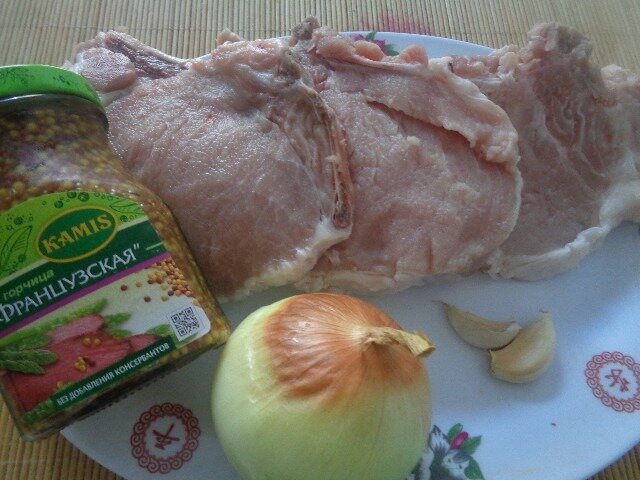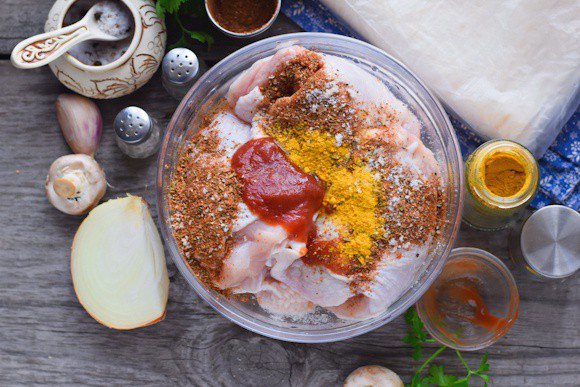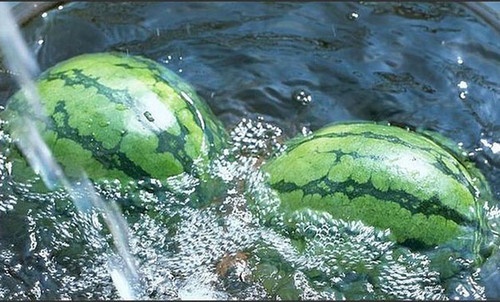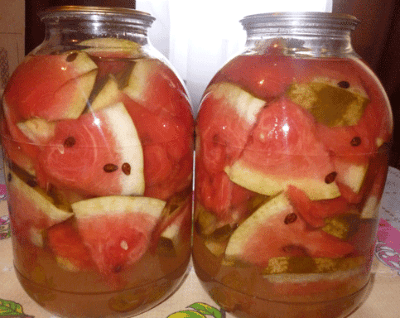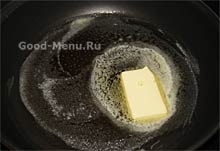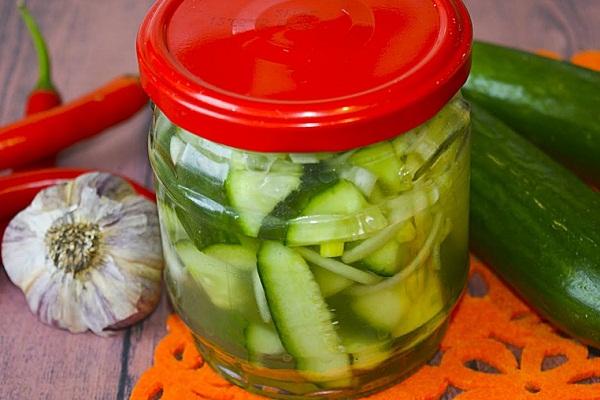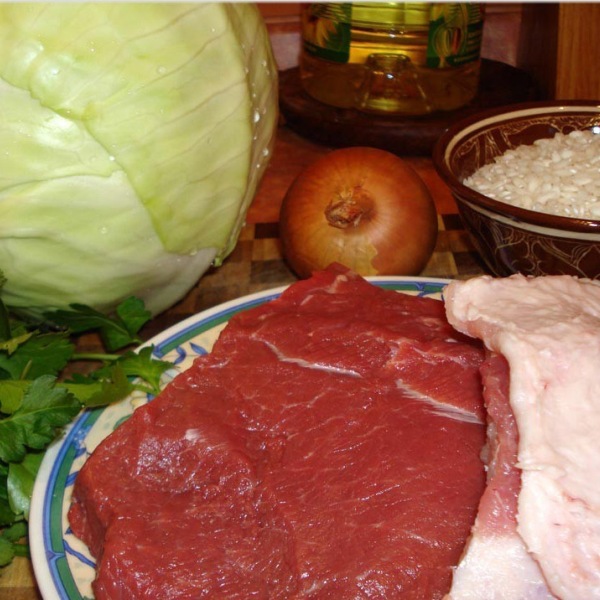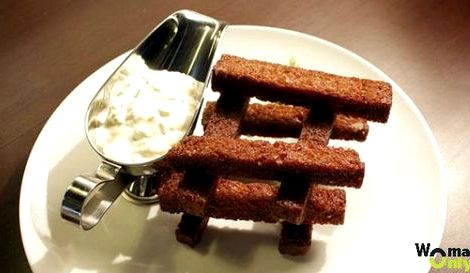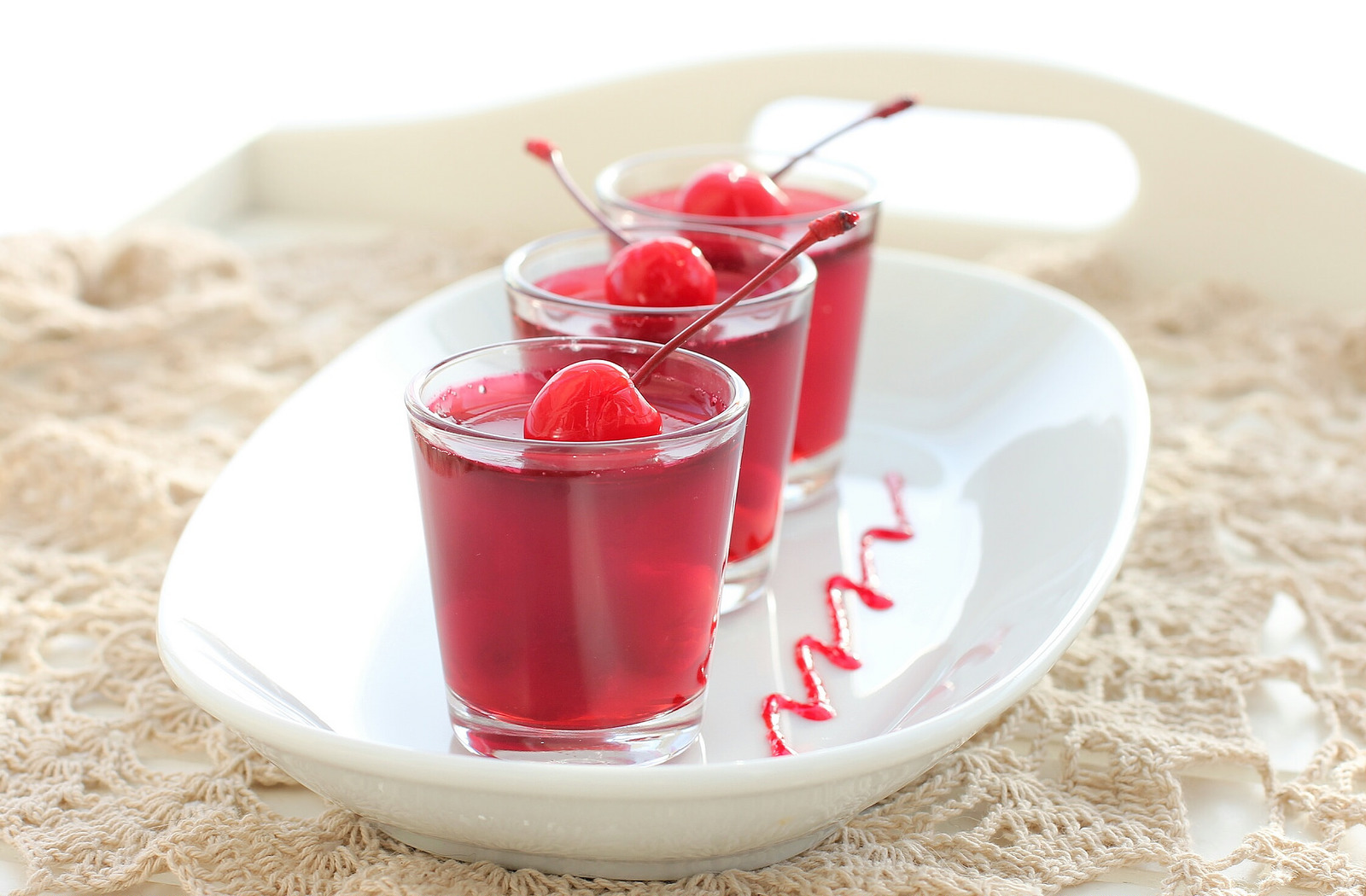Salad. Cultivation
Head of cabbage seedling
For growing lettuce, only cassette or pot seedlings are used (peat cubes are also suitable for this), because the seedlings do not tolerate damage to the root system.
The salad should be planted very finely - so that the peat cube does not completely sink into the ground and rise above the soil level by 0.5-1 cm. With deep planting, the lower leaves are affected by fungal diseases and rot. If phosphate and potash fertilizers have not been applied since autumn for plowing, you can apply them to the beds during planting.
Seedlings method is most suitable for growing lettuce.
Growing seedlings of lettuce is done in two ways: with a pick and without it. Without a pick, lettuce is sown in 5x5 cm pots, and when growing seedlings with a pick in boxes 20-25-25 days before disembarking. The first 2-3 days, after sowing, the room temperature is maintained at about 20 ° C, and after the emergence of shoots, before the formation of the first true leaf, reduce it to 10-12 ° C.
The soil mixture for lettuce through seedlings is prepared from the materials at hand: lowland peat, horseback, sand, sawdust, lime, mineral fertilizers, microelements.
Pick up of plants is carried out in the phase of one true leaf. After that, the temperature is maintained within the range of 16-18 ° C during the day and 10 ° C at night.
Seedling of cabbage lettuce is planted in the ground in the second half of May, when strong frosts are bypassed. A lettuce planted by sprouts requires almost no maintenance before harvesting, only in case of drought they are watered.
Salad is best grown in those areas where crops such as cabbage and potatoes were grown last year, that is, those crops under which organic fertilizer (manure) was applied.

Cabbage Salad
Salad is not suitable for saline and alkaline soils with an acidic reaction, as well as heavy and clay soils. In general, the salad is quite unpretentious. A good harvest of this crop can be obtained with the content of humus in the soil and with proper mineral nutrition.
Before growing lettuce seedlings, soil preparation should begin in the fall of the previous year. First you need to carefully examine the species composition of weeds and in the presence of perennials (sow thistle, gorchaka, wheat grass, field bindweed, etc.) give them the opportunity to grow, and then treat the soil with a herbicide. After that, you need to wait 10-12 days for the herbicide to penetrate completely into the rhizomes and destroy the weed. After that, proceed to the main tillage.
If the land is saline, make a plaster, if acidic - it is lime. On soils with low phosphorus and potassium content, appropriate fertilizers can be applied for plowing. Next, dig up the soil to a depth of 22-25 cm and then, in the fall, cultivated with harrowing, leveling. For planting choose a well-heated area with a southern slope.
And how to feed the lettuce seedlings to get fresh greens in the early stages? The soil is fertilized with humus (3-4 kg / m2) and mineral fertilizers: ammonium sulphate (20-30 g / m2), superphosphate (35-40 g / m2), potassium salt (10-15 g / m2), and at elevated acidity - lime (300-600 g of lime per 1 m2).
The seeds of the lettuce are very small, and they have to be ground up at a shallow depth, so the soil is prepared very carefully: in the fall and spring it is dug up to a depth of 25-28 cm, carefully breaking up lumps and lumps and leveling.
The video “Salad of seedlings” clearly demonstrates how to grow this crop:
Agricultural cultivation of lettuce, review of popular varieties
This is an early culture.
There are several varieties of lettuce: leaf, semi-capped, headed, romain and asparagus.
The most common leaf and headed salads.
For early production sheet is more suitable as the most ripening.
Sheet salad forms a powerful rosette of 5-10 leaflets already in 25-35 days after germination.
It is used for spring and under-winter sowing, in the summer it gives a stem, it starts to taste bitter and loses nutritional value.
Seed germination lasts 2-3 years.
The salad is not only tasty, it also has healing properties:
calms the nervous system, improves sleep, normalizes digestion and metabolism.
Lettuce Varieties
When harvesting cut the leaves, not pulling out the whole plant.
The leaves of this salad are large, of different shapes: triangular, fan-shaped or dissected (similar to oak).
Recently, various varieties have been created with leaf color ranging from light and dark green to pink, dark red and brown.
There are leaves with smooth, bubbly and even wrinkled edges, smooth or faceted.
Ballet - A new excellent salad of domestic breeding with crispy leaves, high-yielding. The leaf is fan-shaped, dark green, the edge is faceted, and the mass of the plant is more than 300-600 grams. It can be grown through seedlings, but can be sown directly into the ground. Resistant to color and lack of lighting.
Tornado - New crisp variety. Cultivated through seedlings sown from March to May or directly into the soil in early June, in early August or before winter. The variety is middle-ripening (55-65 days from germination to harvest), leaf height 30 cm, very tasty, gives a good harvest, resistant to stalking.
 Moscow greenhouse
- known early-ripening variety (from germination to harvesting 30-40 days). Separately, the leaves can be cut before. Bush weighs 70 grams or more. It is grown in the soil and in the greenhouse.
Moscow greenhouse
- known early-ripening variety (from germination to harvesting 30-40 days). Separately, the leaves can be cut before. Bush weighs 70 grams or more. It is grown in the soil and in the greenhouse.
Dubac (Czech Republic) - a new variety, mid-season (40 days), weight 90 grams, leaf oblong, light green, slightly wavy. Appreciated for the ability to grow new leaves instead of cut during harvest. Resistant to tsvetushnosti.
Robin (Czech Republic) - mid-season (50 days), with a high socket with a diameter of 26-30 cm. The leaf is oblong, dark red, medium wavy; weight 90 grams. Collect individual leaves that grow back.
Dubrava - domestic mid-season variety (60 days), but you can pick leaves much earlier. The socket is dense, with a diameter of 40 cm, weighing about 200 grams. The leaves are light green, slightly undulating along the edge, very tasty, tender, outwardly very attractive.
Fun - new domestic variety, mid-season, outlet diameter 40 cm, weight 200 grams. The leaf is reddish, 26 cm long, tasty and tender. Resistant to diseases. You can tear individual leaves, and from July to October.
Emerald - A new domestic variety, mid-season, grown in the soil, the mass of the plant is about 60 grams. It is valuable because it maintains its marketability for a long time, is resistant to stalking, and has excellent taste qualities. Leaf varieties are planted after 30-35 cm, planting should not be thickened, even when collecting individual leaves. Plants are regularly watered and fed. Shoots appear on the 3-5th day, the optimum temperature for growth and development is 20-22 degrees.
 Half-smoked lettuce
Half-smoked lettuce
The semi-capped varieties have a raised rosette of leaves, in the center of which a loose head is tied.
The varieties are mid-season, they are best grown through seedlings, but can be sown in the ground.
There are many varieties.
Of the more precocious varieties are known: Stone heads, Berlin yellow (300 grams), Festival (400 grams).
Among the new varieties:
Moscow region (200gramm) - with crispy leaves; even matured, it does not lose its qualities to 10 days.
Lolla rossa - A new, but already popular, curly handsome; weight 250 grams, corrugated sheet, juicy, tender, green at the base, gradually turning into burgundy. Ready for use after 55 days. The distance between plants is 20-25 cm, resistant to bolting.
Passion - A new variety that has already become popular, with curly tender and juicy leaves, half-crisp, with a raised rosette. The leaves do not accumulate bitterness. Seeds are sown early in the spring in the greenhouse, and in the ground - all summer. It tolerates short-term frosts to -5 degrees, while the leaves, after thawing, do not lose their qualities. Plant weight 270-320 grams, early maturity 60-70 days.
Gribovskiy curly - mid-season, high-yielding, heading loose, weighing 450 grams. Crisp leaf, excellent taste; resistant to stitching and disease. Growing pattern: 25 x 20 cm, sown in April, before the beginning of July. Harvesting from the third decade of June to the end of September. It looks especially beautiful when planted together head and leaf varieties, different colors and with corrugated or wavy edges.
 Red leaf salads
Red leaf salads
Thanks to its extraordinary appearance, red-leafed salads are in high demand among vegetable growers around the world.
However, not all gardeners know that the color intensity and even their corrugation depend on weather conditions.
Sometimes instead of a rich red salad painted on the package, it grows green or pale red.
Scientists attribute this to the fact that in hot weather a salad quickly loses its coloring.
But closer to the fall, at a low temperature, the growth of lettuce slows down, and the color of the leaves increases, its qualities improve.
This should not be forgotten when growing "Colored" salads.
Late cabbages : Krupnokochanny, Kudryavets Odessa, Crisp, Iceber year
Great Lakes - A new (like Iceberg) crispy head lettuce, late-ripening, gives a high yield, ripens in 85 days. Large head of a round shape with a closed top, oak-leaved, dark green. Resistant to burns, tsvetushnosti. Scheme 35 x 30 cm. Under the film and in the greenhouse you can get an early harvest.
Among early cabbage salads : May oilseed.
Head salads are more fruitful, but they ripen late.
However, if the seedlings are planted earlier, then the crop can be obtained earlier.
Now salads with crispy leaves are very popular: Excitement, Ballet, Kudryavets Odessa, Krupnobochan, Moscow region.
New varieties of salads are more productive, they have a better chemical composition, which means their healing properties are higher.
 Growing lettuce
Growing lettuce
Lettuce is an early and cold-resistant culture, so it can be sown in early spring, especially leafy varieties, as well as before winter.
Seeds germinate at a temperature of 4-5 degrees, the most favorable temperature for growth is 15-20 degrees.
Young plants are less resistant to frost.
Salad is demanding of moisture, not only in the soil, but also in humidity. However, when excessive humidity is affected by fungal infections, and the quality of the crop is reduced.
Salad photophilous, it must be grown in a sunny place.
When there is insufficient light, the plant is drawn out, and a loose and small head is formed at the head of the headed varieties.
In dry hot weather, a flower stalk quickly forms, especially in the early ripening varieties, the leaves taste bitter and become unsuitable for food.
This culture is grown in film and glazed greenhouses, under film in tunnels, and also in open ground.
In protected ground under the film, with sharp fluctuations in temperature, as well as low soil moisture, color flow increases. 
The seeds of the lettuce are small, they can be mixed before sowing with sand in the ratio of 1: 0.5.
It is better to make furrows across the beds at intervals of 12 cm.
The soil is fertilized: 1/3 of a bucket is applied to 1 square meter humus with the addition of 1 tablespoon superphosphate and 1 teaspoon of potassium sulfate or 1-2 tablespoons " Mortar " , nitrofoski on acidic soils. Be sure to add 200 grams dolomite flour, as on acid soils lettuce grows poorly.
Having selected large seeds, they are sown at a depth of 1 centimeter.
Inexperienced growers complain of low seed germination. The most common cause is the resulting soil crust, which the seedlings cannot penetrate.
One of the main conditions for obtaining a good rosette of leaves or head is timely thinning of lettuce.
Usually seeded lettuce is thinned twice. Begin with an interval of 5 cm and, as they grow, bring the distance between plants to 15-20 cm.
At the first thinning, the removed plants can be transplanted, like seedlings, to a new place.
For greenery throughout the summer, it is necessary to repeat the crops in 15-20 days.
In the summer they sow medium-late varieties or new ones that are resistant to bolting.
Watering moderately cool water once a week, in the morning or in the evening.
Leaf varieties are watered by sprinkling, and cabbages - the soil along the rows. If the soil when planting was well seasoned, leaf lettuce, as a precocious culture, does not require additional feeding.
 With insufficient refueling it is fed urea
(1 teaspoon per 10 liters of water).
With insufficient refueling it is fed urea
(1 teaspoon per 10 liters of water).
Considering that the lettuce grows longer, it needs one or two additional feedings: fermented grass, divorced mullein (1:10), bio-musmus, "Biode" (1:20), bird droppings (1:20).
It is possible to conduct additional feeding with complex mineral fertilizers (1 tablespoon per bucket of water).
Top dressing combine with watering.
For early production in protected ground lettuce is grown through seedlings.
Sow it in boxes or in the ground under the film (temperature-18-21 degrees). Shoots appear on the 3-4th day. After germination, it is better to lower the temperature by 3-4 degrees so that the seedlings do not stretch out.
Seedlings with 1-2 true leaves are diving, and with the fourth leaf they are planted in a permanent place so that the root neck is at the level of the soil, otherwise it will rot
To speed up the harvest of plants in the ground can be covered with non-woven material.
Through the seedlings, cabbage lettuce is well grown in greenhouses along the edge of a bed with tomatoes or other crops.
Lettuce is ready to eat in 20-30 days (when it has 5-10 leaflets). Selectively remove it (with 5-7 leaves), first tear off individual leaves (if necessary), then cut off the whole plant with a knife, removing the lower, rotten leaves.
After harvesting the salad is not washed, otherwise it will rot.
Cabbage Salad it ripens in 50-70 days when a head is formed with a diameter of 5-12 centimeters or more. Do not be late with the harvest, otherwise there will be bitterness in the leaves.
Salad, intended for storage, it is better to cool immediately after harvesting. Store it at a temperature of 0-10 degrees in a tightly closed package for up to 40 days, in an unsealed package - up to 25 days, in a refrigerator - up to two weeks. 
Salad Diseases
Mealy dew
Powdery mildew is easy to see: discolored spots appear on the leaves in the form of white bloom, growth slows down. This is observed with sharp drops in day and night temperatures. Infection persists on plant debris. Less damaged Moscow greenhouse, Berlin yellow and new varieties.
Protection measures
Do not use chemicals.
Therefore it is necessary to comply crop rotation , remove all plant debris (including the roots after cutting the plants) and diseased plants as they grow.
Regional burn

The regional burn manifests itself in the form of leaf tissue dying: first, the leaf edge turns brown in the form of a strip, the leaves curl, pathogens appear on these places, the leaves begin to rot, and then the whole plant.
The disease is promoted by an excess of nitrogen in the soil, sudden changes in temperature, high humidity of air and soil.
Particularly severe disease manifests itself in greenhouses and under the film cover.
Protection measures .
When the plant is ready for harvesting, limit watering; do not overfeed with nitrogen; when grown in a greenhouse do not allow sharp fluctuations in temperature and humidity.
After full harvest, plant residues, especially the roots that remain in the soil, are removed, since overwintered roots will develop aphid .
for you
Growing greens for sale, especially in winter, has long been considered a profitable business. With proper organization, a greenhouse of medium size can bring a good income every season. Green crops grow rapidly, are rarely affected by diseases and pests, they are not too demanding on the soil, and they are sold out very well. One of the most popular types of greenery is lettuce, the useful properties of which are difficult to overestimate.
Before you buy lettuce seeds for planting, you should carefully familiarize yourself with all the nuances of running a greenhouse business. Incorrect calculations can lead to unnecessary costs, and get at least some benefit will not work.

First you need to highlight the main advantages of growing lettuce in winter:
- in the cold season, the demand for greens is very large and prices are high, and competition in the same period is noticeably reduced
- salad belongs to cold-resistant cultures, therefore it does not require much heat and light;
- leafy types of lettuce quickly increase the green mass, so they sow once, and the crop is harvested 3-4 times per season;
- the greenhouse is always a stable microclimate, which means that the yield does not depend on weather conditions;
- it is much more convenient to handle and fertilize the beds in the greenhouse than in the open area.

Now about the minuses:
- no matter how unpretentious the salad is, it still needs additional lighting and heating;
- plants require a lot of water, and therefore have to think about the organization of watering;
- grown products need to be implemented in a timely manner, and for this it is necessary to independently search for a sales market.

According to entrepreneurs, growing lettuce in greenhouses can be profitable only in the southern and central regions, where the winters are not too harsh. Heating of greenhouses in the northern regions is more expensive than transporting finished products from the south. To calculate the approximate profit, you should compare the wholesale cost of lettuce and the cost of the average monthly cost of maintaining the greenhouse. You can’t get exact figures right away, because a lot depends on demand, competition, the way of realization and other factors.

Greenhouse requirements
Frame and cover
The most significant item of expenditure at the initial stage is the construction of a greenhouse. For winter use, the design should be as reliable as possible, so the presence of the foundation is a prerequisite.

Next, you need to decide on its size: you can’t grow much in a small greenhouse, and building a big one without greenery is risky. On average, the yield of lettuce is 1.5-2 kg per square meter. For the average wholesale or retail sale before the winter holidays, an area of 8-10 m2 is enough, that is, the dimensions of the structure are 2 m wide and 4-5 in length. If the business goes well, the area of the greenhouse can be increased.

There are three types of greenhouses: film, glazed, polycarbonate. To choose the best option for yourself, you should take a closer look at the advantages and disadvantages of each of them:

The frame of the greenhouse is best mounted from wood, as the metal cools faster and contributes to lowering the temperature under the shelter. Wooden bars, on the contrary, will keep heat longer and energy consumption will decrease. To protect the rack from rotting, before installing all wooden elements should be treated with a special impregnation or primer.

Heating methods
For heating greenhouses it is most advantageous to use infrared devices with thermostats. They quickly heat up the soil, are harmless to people and plants, and perfectly maintain the desired temperature. But most importantly, they are easy to install and transfer if necessary, while installing water heating requires precise calculations, time, and certain knowledge.

You can also warm the greenhouse with a wood stove. From the furnace through the greenhouse conduct pipes that are heated by the smoke passing through them. In this case, carbon monoxide is immediately released outside, and the air under the shelter quickly heats up. The method is very economical, but requires constant monitoring, because the laying of firewood is performed manually every 3-4 hours.

Non-decomposed compost and covering materials are used as additional heating. Plant residues mixed with domestic waste of domestic animals, when rotting, emit a lot of heat, and warm up the soil, laid on top. And covering materials effectively retain heat on frosty nights: they hang the walls and the roof of the greenhouse from the inside or outside.
Watering organization
Salad cultures can not develop normally with a lack of moisture. In addition, the water must be separated and warm, otherwise the crops will have to forget. The most convenient method of irrigation is drip.


To do this, a large capacity is installed in the greenhouse, and special porous hoses are laid out on the beds. The hose system is connected to the tank through the pump, and a water supply system is laid under the ground to supply water outside. The pipes must be warmed so that the water does not freeze at sub-zero temperatures.
Video - An example of the organization of drip irrigation
Growing lettuce

Selection of varieties for planting
Salad has a large variety of species and varieties. For sale, you should choose the most productive and early maturity, in order to recoup the costs faster. For the same reason, you need to pay attention only to popular varieties that do not need advertising. Rare and unusual types of salad crops may remain unsold, as most buyers take familiar greens with the usual taste and aroma.
Popular lettuce varieties
| Title | Description |
|---|---|
| Leafy type of lettuce with corrugated tender leaves. At the rosette, the color of the leaves is white, in the middle part it is light green, and along the edge is maroon-brown tones. It has a rich nutty flavor with spicy bitterness. Early ripe, yield up to 3 kg / m2 |
| Mid-season, sheet. Corrugated leaves, rich green, tasty and juicy. During the season, you can harvest 3 times, the total mass of leaves reaches 5 kg / m2 |
| Sheet, precocious. The leaves are tender, bright green, strongly corrugated along the edge. It tolerates the lack of light, resistant to color, yield up to 5 kg / m2 |
| Early leaf variety. Folded leaves, saturated red with green veins. It develops well even with poor lighting, has a pleasant delicate taste, has a high iodine content. Productivity up to 3.5 kg / m2 |
| A popular variety of watercress, the earliest of all. The leaves are small, elongated, saturated green color. The taste of the salad is spicy and spicy. Adapts well to low light and low temperatures. |
| Early, refers to heading varieties. The leaves are very crunchy, light green in color, form a loose head weighing 400-500 g. Demanding on heat, at a temperature below 18 degrees stops growth |
| Mid-season, very cold-resistant. Curly leaves at the edges, light green, head is rather loose, weighing up to 200 g. Taste is sweet, oily, pleasant. |
Sowing seeds in the greenhouse
When grown in a greenhouse, seeds are sown immediately in the beds.

Seedlings method is more suitable for growing crops in the open field. Seed consumption - 5 g per 10 m2, or 30-40 pieces per meter. The soil should be nutritious, friable, with an acidity of 6.0-6.5 pH. The beds moisten well and make shallow grooves for seeds. The distance between the grooves is 20 cm for leaf varieties and 35-40 cm for heading. The maximum embedment depth is 1.5 cm.
Tip! To ensure uninterrupted harvest, the beds should be sown in stages, at intervals of 10-12 days. So you will have fresh products for sale constantly throughout the season. This is especially true for those who sell greens at retail, that is, he trades on the market.
In order for the sprouts to slip, the temperature in the greenhouse must be within 18-20 degrees. A decrease, as well as an increase in temperature, will slow down the growing process. Be sure to monitor the condition of the soil: it should not be allowed to dry out or stagnate water. In case of severe frosts, the landing sites should preferably be pulverized with crushed organic matter, for example, rotted humus.

Seedling care
After the appearance of the shoots of the ridge between plantings, they are carefully loosened in order not to damage the delicate seedlings. In the phase of three leaves, sprouts need to be thinned, leaving 2-3 cm between plants. The second thinning is performed after 5 true leaves appear. This time the distance between the seedlings should be between 10-25 cm (depending on the type of lettuce).

Thinned plantings are fed with nitrogen fertilizer: 15 g of urea per linear meter. Instead of urea, 15 g of potassium chloride and 10 g of ammonium nitrate can be taken. Drugs must be diluted in water.

Further care includes regular watering and loosening of the soil in the rows. Periodically, the greenhouse needs to be aired by choosing the warmest and windiest days. But drafts should be avoided, otherwise the salad will cease to grow in mass and lose its presentation.
Harvest for sale

Lettuce - collection rules
Leaf lettuce is ready for harvesting when the length of the leaves reaches 8 cm. The head lettuce is harvested when the head is fully formed. Watering the salad before harvesting is impossible, as well as washing freshly cut leaves. It is best to cut the leaves and cabbages in the late evening or in the morning. To preserve the presentation during transportation, the salad should not be packed tightly in boxes and squeezed. Before implementation it is necessary to remove all yellowed and rumpled leaves. It should be remembered that the salad after cutting is not stored for a long time, and therefore it should be implemented as soon as possible.

Watercress in the store
Show on page Open full size

Video - Growing lettuce in a greenhouse in winter for sale
Growing leaf lettuce in the open field does not cause any troublemaker to the summer resident, and the benefits of it are not small. Leaf lettuce contains almost all groups of vitamins and many minerals: potassium, calcium, manganese, iron, iodine, copper, molybdenum, boron, as well as organic acids. Eating lettuce contributes to proper digestion, speeds up and normalizes metabolism. Only there is a prerequisite - the leaves should not undergo heat treatment, i.e. the faster they are from the bed, the more useful.
Temperature and humidity conditions.
Leaf lettuce is cold-resistant, light-loving and moisture-loving culture, like radishes. The needs of these cultures are also practically the same. A good solution would be to sow radishes and lettuce on the same bed. They will protect each other from pests.
Lettuce seeds begin to germinate at +4 + 5 ° C, therefore, it is necessary to sow them immediately after the snow melts into the slightly warmed soil. The seedlings painlessly withstand frosts up to -2-4 ° C, and grown strong plants with 4-5 true leaves stand up to -6-8 ° C.
The optimum temperature for plant development is +15 + 20 ° C, it is in this temperature range, provided that the soil and air humidity is sufficient, an active increase in green mass begins. As the temperature rises above +20 + 25 ° C, the plant produces less greenery, languishes and shoots a seed arrow. Also, at an elevated temperature, seeds do not germinate well, so do not wait for this summer to sow lettuce.
Leaf lettuce is demanding of the sun and light, does not like to grow in deep shadow. It is preferable to plant it in open sunny areas in early spring. If you are late with spring planting, then plant the salad in shady places. The scorching hot sun completely stops the growth of lettuce, so try to shade the seedlings with other cultures.
Salad cannot develop without an abundance of moisture in the soil and air. Therefore, it is advisable to water it every day, and preferably evening (after sunset). Moreover, it is better to water it with sprinkling, wetting the leaves with water too, but not in the heat.
What kind of soil?
It is best to grow lettuce on loose soils with a large amount of organic matter and trace elements, while the acid reaction of the soil should be neutral or slightly alkaline from 6.0 to 7.2 pH.
Sour soils, saline, heavy clay are not suitable for growing leaf lettuce. For the rest, the salad is unpretentious, i.e. it grows well on sand, and on loam, and on black soil, and on carbonate soils.
It is necessary to prepare beds for leaf lettuces in advance, in the fall. It is advisable to use the beds to which fertilizers were applied. In the autumn, they must be loosened and, if desired, add rotted manure or compost at the rate of a bucket of 1 m 2.
We leave everything as it is until spring.
Due to the fact that the root system of lettuce is not buried, the soil must always be kept loose and moist.
Sorta
For open ground:
- Emerald, Robin,
- Ballet,
- Dubachek MC,
- Kritset
- Riga,
- Odessa driver
- Lifel,
- Eurydice
- Red Credo and others.
In the spring, as soon as the snow melts, the bed is covered with a black film so that the earth warms faster. A week later, remove the film and sow the seeds of lettuce.
Important! To accelerate the emergence of seedlings above the bed, you can build a greenhouse with a transparent film. Under it will create optimal humidity. When the seedlings appear, you can remove the film for the day, and cover it for the night.

We make grooves up to 2 cm deep, the distance between the grooves is 15-20 cm, depending on the type of lettuce. The more bushy the variety, the greater the distance required.
Wash the furrows with warm water and scatter the seeds. You can try to sow so that one seed was 2 - 3 cm, and you can not bother at this stage, and sow with a solid tape, and then thin out the seedlings. Depth of seal 0.5 - 2 cm.
Fall asleep grooves primer.
Important! Salad is convenient to grow as an additional crop in the beds with radishes, cucumbers, cabbage, zucchini and other crops.
Shoots should appear in 5 - 7 days. After the appearance of 3 - 4 true leaves of the lettuce plant, it is desirable to thin out. Therefore, we pull out the excess, leaving one plant for 5 - 7 cm.
We carry out the second thinning, when there will be 6 - 7 true leaves on the shoots, leaving a distance of 15 - 20 cm.
For cultivation in the greenhouse:
- Moscow greenhouse,
- Lollo Ross,
- Odessa driver
- Riga.
In a heated greenhouse, lettuce can be grown all winter, in an unheated one you can begin to sow from March 1st. The soil is prepared in advance, the sowing is shallow - 0.5 cm is enough, you can fall asleep with soil or peat. For growing lettuce in a greenhouse, a greenhouse thermos is quite suitable for you. It is easy to build with your own hands
The rest of the technology of growing lettuce in the greenhouse is practically no different from growing in open ground. It is necessary to create an optimal temperature and humidity conditions and ensure that diseases do not appear. There is only one feature: the greenhouse must be ventilated. Only when it is very cold weather can ventilation be turned off.
Under the conditions of open ground, the surface of lettuce leaves and the ground dry out rather quickly in the wind. In the greenhouse this does not occur. Therefore, watering is necessary to do drip and keep the surface of the soil dry. Falling on the wet soil, lettuce leaves begin to rot very quickly. Yes, and increased soil moisture leads to the appearance of root rot.
For cultivation on the windowsill:
- Red creed
- Odessa,
- Lollo rossa
- Lolo bionda
- Grand Rapids.
Any early ripening varieties with a not too developed root system can be grown at home all year round. Only in winter, when the sunny day is very short, it is necessary to illuminate the lamps.
For the cultivation of leaf lettuce on the windowsill, ordinary pots are suitable for indoor plants with a height of at least 10 cm.
At the bottom, we must fill the drainage (expanded clay, pebbles or other material) with a layer of 2 to 3 cm. Fill the pot with soil from the garden with the addition of rotted manure and sand. We make small indentations in the ground, not more than 0.5 cm. The distance between the holes is 2–3 cm. We spill them with water. Then put 1 - 2 lettuce seeds in each hole. Sprinkle with soil and pour water. Cover the pot with plastic wrap.
It is best to put the pot on the windowsill on the glazed loggia, as the leaf lettuce does not like too hot air and high temperatures that can wait for it on the windowsill above the heating radiator. On the glazed loggia will be just right.
After 5-7 days, lettuce shoots will appear. Remove the film. Now you need to make sure that the soil under the salad is not dry. We constantly water the plants and arrange a “shower” from the spray gun. Required only in the evening.
When the height of the leaves reaches about 8 - 10 cm, you can pick them off and eat them. Approximately 5-7 weeks after sowing, it will be possible to use the whole bush of lettuce. Then it is desirable to make a complete cut of the bush, leaving only the root. Just a little more, a week or two, the plant will be edible, delicate short leaves will grow, but then it will launch an arrow with seeds. Then remove it from the pot completely.
Care
Care for the sowing of leaf lettuce consists only in timely watering, loosening the soil and removing weeds.
Watering is necessary once a day in dry weather and 2 - 3 times a week in cool and overcast. This is best done by sprinkling after sunset. Watering a salad from a watering can on a hot day, as the wet leaves will wither.
Feeding is not necessary, as the culture is precocious. It is better to make all the necessary trace elements in advance. Only in exceptional cases, you can combine watering with fertilizing, adding a little manure to the bucket and carefully hanging it in the water.
It is impossible to fight pests of leaf lettuce with the help of chemicals. You can use only natural remedies, garlic infusions, biologics.
If a disease is detected on a lettuce plant (root rot or other), it must be immediately removed completely so that the disease does not spread.
Harvesting and storage
It is possible to collect a salad when its leaves reach an optimal length for consumption, i.e. not less than 8 cm. You can pick out individual leaves and eat them on the same day, or pick a whole plant and store in the refrigerator.
You can tear the lettuce leaves only in the morning in dry weather, since wet leaves are not stored even for one day. After the leaves have been picked, they are neatly placed in a plastic bag and placed in a refrigerator. There they can lie down for 1 - 1.5 weeks, then they will start to deteriorate.
At room temperature, leaf lettuce is not stored. Only at low. You can wash the leaves just before use and it is advisable to dry them immediately, otherwise they will lose some taste.
Leaf lettuce - spring and autumn plant. Grow it in the summer in hot weather is quite difficult, and not necessary. By that time, a sea of other healthy and tasty herbs ripens. But in early spring salad - salvation from beriberi and spring depression.
Sow and eat on health!
People need fresh vitamins all year round, and a special need for them arises in the winter and early spring, when the garden and garden are resting. But so that our body does not experience a deficiency in vitamins, it is possible in the winter to grow crops that have the most valuable healing and nutritional qualities, such as green onions, watercress and leaf lettuce, in greenhouses or on a windowsill. Moreover, it is not as difficult as it seems at first glance. And in early spring you can sow them again in the garden. In this article we will tell you about such a culture that is important for the human body as a salad and how the salad is planted and cared for at home and in the open field.
Listen to the article
Planting and care of the salad (in short)
- Landing: sowing seeds of early ripe varieties in open ground - from April to May, mid-ripening and late - from April to mid-June. You can sow early varieties before winter - in late October or early November. Sowing seeds for seedlings can begin in April, and seedlings are planted in open ground in May. When growing lettuce at home, sowing is done at any time.
- Lighting: bright sunlight or bright ambient light.
- The soil: loose, nutritious, humus, moderately moist - chernozem, loam, carbonate soils with pH6.0-7.0.
- Watering: usually once a week in the morning or evening. Since the formation of heads, watering is reduced. In strong heat, the salad is watered at night.
- Top dressing: Not needed. Fertilizers will be applied to the soil before sowing or planting seedlings.
- Reproduction: seed.
- Pests: lettuce, stem lettuce, white-haired filly and slugs.
- Diseases: white and gray rot, perinospora, powdery mildew and viral mosaic.
Read more about growing lettuce below.
Plant salad - description
Plant salad, which would be more correct to call lettuce lettuce, is a herbaceous plant of the Latuk genus of the Astro family. This crop is represented by annual, biennial and perennial varieties. The name of the genus comes from the Latin word lac, which means "milk" - the plant contains milky juice. There are several varieties of lettuce - leaf, half-smoked and headed, and also Roman (Roman). All of these forms are equally popular in amateur gardening.
At first, lettuce develops basal leaves, and only then a strongly branched flowering stem appears, reaching a height of 60 to 120 cm. Yellowish-green, sometimes red lettuce leaves form a rosette. They are obovate, sessile, horizontal, large, solid, serrated or rugged, smooth, wrinkled, curly or crimped. At the head of lettuce leaves are closed in a rounded or flat-round head. On the underside of the leaves along the median stem there are setae. Lettuce inflorescences are small cylindrical heads of a pitcher-shaped form, consisting of small lingular bisexual yellowish flowers, which are collected in large numbers in panicles. The fruit of lettuce - achene.
The origin of the salad is not known for certain, but it is suggested that it originated from a compass lettuce that grows wild in West Asia, North Africa, Central Asia, and Southern and Western Europe. Herb salad was introduced into culture long before our era: there is evidence that the salad was cultivated in the ancient states of China, Greece, Rome and Egypt. In Europe, it began to grow from the XVI century.

Salad culture is cold-resistant, light and moisture-loving. Eat fresh lettuce containing a large amount of vitamins and minerals. However, as the stem begins to grow, the leaves of the plant acquire a bitter taste and become unsuitable for food. Not everyone knows the useful properties of the salad, with which we will introduce you, as well as the contraindications of salad, which, fortunately, quite a bit.
Sowing lettuce seedlings
When to sow lettuce on seedlings
Through seedlings, lettuce is grown for early production or in late cold spring conditions. Salad in the Moscow region or other areas of the middle band can be sown directly into the ground, but in more northern areas for growing lettuce it is better to use the seedling method. You can sow the salad in the boxes, and you can in a protected ground under the film. Lettuce seeds are sown for seedlings 30-35 days before planting seedlings in open ground. For sowing, it is best to use pelleted seeds - it is more convenient to sow them and they have a high ability to germinate. If you have ordinary seeds, mix them with sand to make your work easier.
Growing seed salad
To prepare the substrate you need to sand and peat, taken one by one, add two parts of high-quality humus soil and mix well. Although it is easier to buy in the store the soil “Universal”, “Vegetable” or “Biogrunt”. As a container, you can use boxes and containers, but better pressed peat cubes with a face of 4-5 cm. Seeds are etched for 2-3 hours in a pink solution of potassium permanganate and scattered over the surface without sealing. If a box is used for sowing, seeds are sown into grooves with a depth of no more than 1 cm. The distance between rows should be 5 cm, if you continue to sow diving, and if you decide to do without picking, then the interval should be at least 10 cm. copiously but carefully watered and placed under the film. Keep them better in a bright place at a temperature of 18-21 ºC.

Shoots may appear on the third or fourth day, and as soon as this happens, the temperature is lowered by 3-4 degrees, otherwise the seedlings may stretch. When a seedling develops 1-2 true leaflets, it dives if necessary. In the open ground, seedlings are planted in the development stage of 3-4 leaves after two weeks hardening of seedlings, which consists in daily staying some time in the fresh air, and the duration of these sessions is gradually increased until the seedlings can spend the whole day in the yard. Growing lettuce at home does not require hardening procedures.
How to grow homemade salad
Growing lettuce in the apartment can be done all year round. Planting of lettuce is done in boxes or in pots with a capacity of 1-2 liters, which is placed in the spring on bright, sunny windowsills. In winter, most likely, you will have to arrange additional lighting for the plant with fluorescent lamps or phytolamps in order to increase the length of daylight by 2-3 hours.
As a substrate, you can use the mixtures already mentioned, or you can make it from one part of biohumus and two parts of coconut fiber. Pickled, as mentioned, the seeds are immersed in a wet substrate, laid out in pots on top of the drainage layer, 5-10 mm, after which the crops are watered, covered with polyethylene and placed in a dark place. As soon as 3-5 days later shoots appear, the film is removed, and the crops are transferred to the light. It is possible to eat salad when it has 5-10 leaves. Do not wash the cut salad if you are going to store it, because it will rot.

Watering lettuce
Salad at home needs regular watering once every two or three days, it is especially important to water the salad during the hot season, since drying out of the substrate speeds up the formation of floral arrows and, consequently, the appearance of a bitter taste in the leaves. In general, the optimum temperature for growing seedlings is 16-20 ºC, although they feel great on the loggia at a temperature of 6-7 ºC. Dangerous than coolness is for the salad to have a higher temperature and dry air; therefore, fresh young greens should be sprayed daily with a spray bottle. Both watering and sprinkling lettuce in a pot should be separated with room temperature water.
Dressing salad
Intensive growth of lettuce is possible only with good nutrition, so it is desirable to add liquid complex fertilizer to the substrate every week. But since lettuce has the ability to accumulate nitrates, the amount of added nitrogen must be controlled, and even better, homemade lettuce is fed with organic matter, for example, an aqueous solution of mullein in a ratio of 1:10.
Planting lettuce in the ground
Since the salad culture is cold-resistant, it can be sown in the soil before winter - in late October or early November. In the spring, the early ripening varieties of lettuce are sown from April to May, mid-season and late litters - from April to mid-June. If you want to have a fresh salad all summer, you can sow it repeatedly every 7-10 days until mid-August.
Conditions for growing lettuce suggest placing the beds in an open, sunny place. Sow lettuce in a loose, nutritious soil with a sufficient amount of organic matter and trace elements. The acid reaction of the soil should be slightly alkaline or acidic - from 6.0 to 7.0 pH. Only heavy clay soils are not suitable for the plant, and lettuce grows normally in black soil, loam, carbonate soils and sand.
It’s good if before cabbage we cultivated early cabbage, zucchini, potatoes or cucumbers, under which fertilizers were applied to the soil, and next to the salad it’s better to grow all kinds of cabbage, radishes and radishes - the lettuce does not like cruciferous flea, which harms cabbage cultures. Salad is a good neighbor for plants such as garden strawberries, peas, tomato and spinach. The very same salad is useful neighborhood with onions, deterring him from aphids. Grow lettuce in one area at least with a two-year interval.

Prepare a bed for the salad in advance: they dig up, making compost or rotted manure at the rate of 1 bucket of organic matter per m² area. In the spring when loosening before planting in the ground make 1 tablespoon of superphosphate, 1 teaspoon of potassium sulfate and 1-2 tablespoons of Mortar. On acidic soils, instead of Mortar, Nitrophoska is used in the same amount, necessarily adding 200 g of dolomite flour per unit area. Sow seeds mixed with sand in the ratio of 1: 0.5, into the grooves 5-10 mm deep, made in moist soil at a distance of 15-20 cm from each other.
Seeds germinate at a temperature of 5 ºC, but keep in mind that at 20 ºC lettuce grows worse. When the seedlings begin to grow en masse, they need to be thinned out in such a way that between seedlings there will eventually remain an interval of 6-8 cm for leaf varieties and 10-15 for heading. Thinning is best done in two stages.
If you prefer to grow lettuce in a seedling way, then plant seedlings of compact early ripe varieties according to the pattern 25x25, and large lettuce - 35x35 cm. Planting is carried out in moist soil. The root neck of seedlings should be at the level of the surface or slightly higher.
How to grow lettuce in the ground
Growing lettuce in the open field requires, above all, regular watering, loosening the soil and weeding. Try to loosen the soil after each watering or rain and timely remove weed grass from the site.
Watering lettuce
Open-air lettuce is watered once a week, in the morning or in the evening. For leaf varieties, it is better to use a sprinkling method, and let the lettuce humid by watering the soil along the rows. From the moment when the lettuce begins to form heads of cabbage, watering should be reduced so as not to provoke the development of putrefactive phenomena. In order to prevent the appearance of internal necrosis of lettuce, it is better to produce watering at night during strong heat. In general, the need for irrigation is determined primarily by weather conditions.

Dressing salad
If the soil before sowing was well fueled with fertilizers, it is no longer necessary to feed leafy varieties of lettuce in the future. But if the nutrients in the soil are not enough, in order to get a crispy salad, it is necessary to add nitrogen, phosphorus, potassium, calcium and magnesium to the soil. A cabbage lettuce, since it has been harvested longer than a leaf, needs one or two dressings. As fertilizers, you can apply fermented grass infusion, mullein diluted with water (1 part fertilizer and 10 parts water), bird droppings diluted with water in the ratio of 1:20, or biohumus. Top dressing is usually combined with watering lettuce.
What to plant after salad
The following year, on the site where you grew the salad, it is best to plant peppers and tomatoes.
Salad Pests and Diseases
Salad Diseases
The most harmful diseases of lettuce are white and gray rot, peronosporosis, powdery mildew and viral mosaic. The difficulty is that it is impossible to fight with diseases of the salad with chemicals, since the leaves of the plant accumulate not only nitrates from nitrogen fertilizers, but also fungicides.
Gray lettuce rot, caused by the fungus botrytis, it affects the stems and leaves: necrotic spots of brown color appear on them, which gradually spread from the lower part of the plant to the upper. Cloudy weather and high humidity favor the development of gray rot.
Ways of protection: The most important method of preventing disease is crop rotation. It will help to protect the lettuce from gray rot, keeping the area clean, immediate removal of affected leaves and plant residues at the end of the season. In addition, there are varieties of lettuce that are not as susceptible to gray rot, for example, the Moscow Greenhouse, Crystal or May.

White rot affects the ground organs of lettuce. The infection penetrates the leaves close to the ground or lying on it, then the disease penetrates the stem through the petioles and forms bright watery spots on it. The affected tissues are covered with a flaky white mycelium.
Ways of protection: in the fight against white rot, a prerequisite is the alternation of crops, the timely removal of affected leaves and specimens. In the autumn it is recommended to carry out deep tillage or harvesting of plant residues. Do not grow lettuce on heavy acidic soils and control the amount of nitrogen in the soil.
Perinosporosis, or downy mildew, also affects the ground organs of the salad: on the upper side of the leaves appear almost yellow blurred or angular spots, while on the lower side the leaves are covered with white bloom. With the development of the disease, the spots turn brown and the diseased leaves dry up. The disease progresses in conditions of high humidity and the presence of droplet moisture.
Ways of protection: it is necessary to strictly observe the alternation of crops on the site, sow healthy seeds. If there is any doubt about the quality of the inoculum, pickle it in the 80% TMTD solution. Do not thicken the crops - follow the planting schemes for both leaf and head of lettuce.
Regional burn - With this disease, the rot gradually captures the whole plant, and it dies. Too much nutrients in the soil contribute to the development of the disease.

Ways of protection: maintaining crop rotation, balanced application of fertilizer to the soil, especially nitrogen, regular watering, timely removal and destruction of diseased specimens and plant residues from the site at the end of the season.
Mealy dew strikes stems, cabbages and lettuce leaves — a white powdery coating appears on them, the growth and development of the plant slow down. The seedlings of lettuce in the stage of flowering and seed ripening suffer the most. Powdery mildew progresses during a period of sharp fluctuations in day and night temperatures.
Ways of protection: to prevent the disease, you can observe a crop rotation, removing diseased leaves and cabbages during the growing season and plant residues after its termination.
Lettuce pests
Among lettuce pests, lettuce, stem lettuce, white filly and slugs are particularly dangerous.
Lettuce fly - insect 7-8 mm long. The females are ash-gray with wide-set red eyes; the males have a black velvet back. Flies damage the testes of the plant - they lay eggs on the inflorescences, and the larvae that emerge from them destroy the seeds. Damaged inflorescences do not open and darken.
Ways of protection: As soon as the first larvae appear, the plants are treated with Phosphamide in strict accordance with the instructions. Damaged pest inflorescences should be cut and destroyed.
Stem Salad Aphid very common pest. Wingless insects have a length of from 1 to 2.5 mm, Winged slightly less - up to 2 mm. These are sucking pests of a greyish-green or dark gray color that inhabit the flowers, stems and leaves of lettuce. Organs damaged by aphids are discolored, twisted, and the color of the lower leaves becomes mosaic. As a result, plants are stunted in growth and development. In the fall, lettuce aphid goes over currants.
Ways of protection: processing the leaves with infusions of onion peel, dandelion leaves or green potato leaves will help protect the salad from aphids.

White strap or slender filly - A multi-tidal pest of locust grayish-yellow, green or brown. The length of the filly is from 13 to 21 mm. It is a gnawing pest, damaging the leaves and stalks of lettuce.
Ways of protection: in order to prevent the occurrence of these insects, it is necessary to remove perennial weeds from the site, especially wheat grass. After harvesting the lettuce, spray the plant residues and the soil well with Karbofos solution, and the next day remove the remnants from the site.
Bare slugs tender salad leaves also often damage, making big holes in them. Gastropods exhibit the greatest activity in the evening and at night, and during the day they lie down in the cool damp - among the leaves, in the shade of plants.
Ways of protection: on the site they place cans of beer, and when slugs crawl to drink, they are collected and destroyed.
Types and varieties of salad
Lettuce sowing is a kind of Latuk, therefore, when they write "types of lettuce," most likely have in mind four of its varieties - leaf, half-speckled, headed, and the so-called Roman, or Roman.
Leaf salad
using, not pulling out and not digging up the plant, and tearing off the leaves from it - large and whole (oblong, fan-shaped or triangular in shape) or cut (dissected or oak-leaved). The most famous varieties of leaf lettuce:
- Kritset - heat resistant early ripe salad for protected and open ground, ripening in 40-45 days. It has thin leaves of light green with a yellowish tint. The weight of one plant is about 250 g;
- Emerald - resistant to heat and stalking, mid-season variety with dark green obovate small bubble leaves of excellent taste. The plant weighs about 60 grams and does not age at the root for a long time;
- Ballet - resistant to strelkovaniyu and lack of light variety for growing in spring and winter in greenhouses, and in the summer in the open. The leaves are large, dark green, crispy, fan-shaped with a scalloped edge. The weight of one plant is from 300 to 600 g;
- Fun - Disease-resistant and stem-growing middle-ripening variety with bright red, large leaves with an oily texture. Outlet weight about 200 g;
- A sandwich - an early grade with the gentle and crackling leaves of light green color with wavy edges. The average weight of one plant is about 180 g. The variety is ideal for making sandwiches and salads;
- Moscow greenhouse - early-ripening variety for protected ground, ripening in 30-40 days, with large, sweetish, juicy and tender light green leaves up to 18 cm long. The mass of the socket is from 100 to 200 g. The virtue of the variety is that its leaves remain for a long time fresh and do not get a bitter taste.

In addition to those described, such leafy varieties as Tornado, Roblen, Dubacek, Dubrava, Lollo Rossa, Lollo San, Lollo Biondo, Lakomka, Royal, Kitezh, Crispy Vitamin and others are popular.
Semi-seasoned salad
similar to the usual leaf lettuce, and its leaves are collected in small, but unclosed kochanchiki. The most famous varieties of this type of lettuce are:
- Odessa Kucheryavets - mid-ripening variety resistant to tsvetushnosti, forming a loose rosette with a diameter of 24-32 cm and a mass of not more than 200 g. The leaves of plants of this variety are green, fan-shaped, with a shirred edge, crispy, of excellent taste;
- Eurydice - mid-season variety with a semi-raised compact rosette about 35 cm in height and about 33 cm in diameter. The leaves are large, dark green, bubbly with a wavy edge, crispy, of excellent taste;
- Festival - mid-season variety ripening for about 70 days. It has a large rounded rosette weighing up to 150 g, consisting of juicy light green leaves of excellent taste;
- Berlin yellow - also a mid-season variety with a rounded rosette with a diameter of up to 30 cm and a weight of up to 200 g consisting of yellowish leaves;
- Kucheryavets Gribovsky - disease-resistant medium early variety with a loose rosette weighing from 250 to 470 g. The leaves are bright green, large, fan-shaped with a finely corrugated edge, crispy and juicy, of excellent taste.
Also popular are the semi-capped Kado type, Stone Heads, Grand Rapids, Azart, Admiral and others.
Cabbage Salad
in appearance it resembles dense cabbage heads. The scientific name of the head of the crispshead salad is crispy heads, as the leaves of this salad really crunch. This variety was bred by farmers in California back in the 20s of the last century. Heads of lettuce:
- Iceberg - high-yielding variety not prone to rifle ripening in 75-90 days, with pleasant to the taste bubble leaves with wavy edges, which retain their freshness for a long time. The weight of heads of this variety is 300-600 g;
- Great Lakes - Crunchy late-ripening, high-yielding variety resistant to tsvetushnosti and to burns, maturing in 85 days. It has a large round head with a closed tip, consisting of dark green leaves, resembling oak leaves;
- Attraction - a productive mid-season variety with a high rosette consisting of large, light green, slightly undulating along the edge, oily leaves of a triangular shape. The mass of one head is 230-260 g;
- Four seasons - mid-season variety for open and protected ground with medium-sized heads. The outer leaves have a red-bronze tint, and the inner leaves are yellow-green. The texture of the leaves is delicate and oily, the taste qualities are excellent;
- Design - high-yielding, stalk-resistant, mid-late variety with a head up to 20 cm in diameter. Green, crispy, medium-sized, rounded flat, bubbly, wavy on the edge, with small cuts in the upper part, of excellent taste. The mass of the head is 500-650 g.

In the culture, the varieties of the head lettuce Khvorost, Petrovich, Argentins, Papiro, Crystal, Yadho, Kucheryavets Semko, Buru, Umbrinas, Platinas, Opal, Afitsion and others are also in demand.
Roman salad, or romaine lettuce
forms a head of elongated shape. The root of the Roman lettuce is a branched rod, the head is covered with leaves of rich green color, and inside the head of the head is yellowish. Romaine lettuce is represented by such varieties:
- Paris green - heat-resistant and cold-resistant mid-season variety, which forms cabbages on the 84-90th day from the moment of emergence. The diameter of a loose head is 32-39 cm, weight is from 200 to 300 g, crispy, juicy dark green bluish leaves up to 27 in length and up to 13 cm wide are sweetish in taste;
- Legend - resistant to peronospora, marginal burn and bolting, a new variety that forms a medium-sized compact green head of slightly blistering leaves;
- Remus - resistant to peronospozu, fruitful late-ripening variety with a closed loose elongated oval head with an average weight of up to 430 g. Medium-sized, dense, dark green elliptical leaves have a bubbly texture;
- Balloon - late-ripening variety with oblong-oval loose heads with a diameter of up to 12, height up to 25 cm and a weight of 300-350 g. Leaves are light green;
- rome roman - resistant to septoriosis and bacteriosis, middle-ripening variety with elongated obovate leaves up to 26 cm long with a slightly visible fine-cellular slightly fibrous texture and hardly torn toothed edges. The heads are oblong-oval, of average density, up to 25 in height and up to 14 cm in diameter, weighing 290-350 g.

Varieties of roman lettuce Stanislav, Vyacheslav, Sukraine, Dandy, Veradarts, Sovski and others are also grown.
In terms of ripening lettuce varieties are divided into early ripening, early, mid-ripening and late. The most precocious variety is Lue Leaf - lettuce, which is 25 days old. The varieties Kholodok, Lollo Rossa, Robin, Moscow Greenhouse and Dubachek reach ripeness in 35 days.
Mid-season varieties Formed in 45 days - Vitamin, Green Peak, Sunshine - make it possible to get two harvests per season.
Middle late varieties which include Rubin and Gourmet, ripen in 55 days.
Of the varieties that are not inherent bitterness, it can be noted Green Manul, Rhapsody, Odessa Currier, Vitamin and Moscow Greenhouse.
Salad Properties - Harm and Benefit
Medicinal properties of salad
What is part of the lettuce? What are the beneficial substances for the human body? Lettuce is rich in folic acid, which controls metabolism and is involved in the blood and the nervous system. In terms of salt, lettuce is inferior only to spinach. Of the trace elements it contains zinc, molybdenum, titanium, iodine, boron, copper, cobalt and manganese. Its leaves also include potassium, calcium, silicon, iron, magnesium, phosphorus and sulfur, which plays the role of an oxidizer and provides, in combination with phosphorus and silicon, a good condition of the tendons, skin and promoting hair growth.
Lettuce leaves are a source of vitamins A and C, contain alkaloids, gums and bitterness, have expectorant, sedative and diuretic properties.
Since the most active element in the body is iron, it is very important that its reserves are regularly replenished. Therefore, it is so useful salad, containing iron in large quantities. The element accumulates in the liver and spleen, and then, if necessary, is used by the body, for example, to form red blood cells with significant blood loss.

As a dietary product, lettuce is useful for a sedentary lifestyle and diabetes, as it improves digestion and calms the nervous system. It is also shown to older people who have suffered a serious illness.
Water infusion of lettuce seeds contributes to the increase in lactation, and for heart diseases, homeopathic preparations based on lettuce juice are widely used. In folk medicine for chronic gastritis, liver disease, hypertension or insomnia, an infusion of fresh lettuce leaves is used.
To all this, it should be added that eating fresh lettuce has a beneficial effect on fat metabolism, lowers blood cholesterol levels, which reduces the risk of obesity, atherosclerosis, or hypertension.
Salad - contraindications
Salad is not recommended for patients with gout, urolithiasis, as well as chronic or acute colitis, enteritis or other intestinal diseases that are accompanied by dyspepsia. Salad is not useful in acute gastritis, gastric and duodenal ulcers, phosphaturia and oxaluria. Overeating lettuce can lead to increased gas formation, which has a negative effect on patients with asthma and tuberculosis.
4.3333333333333 Rating 4.33 (21 votes)








